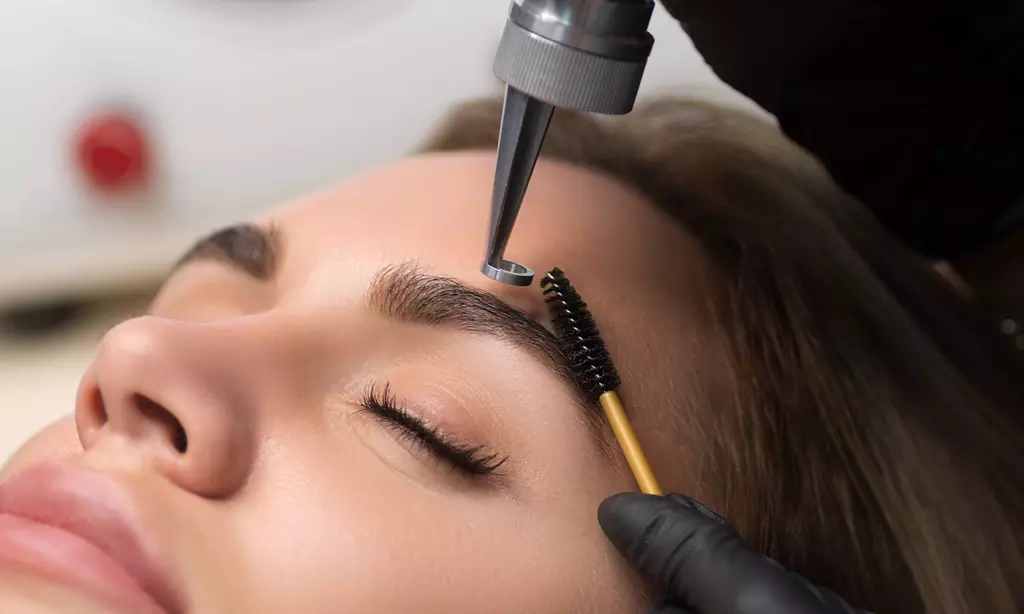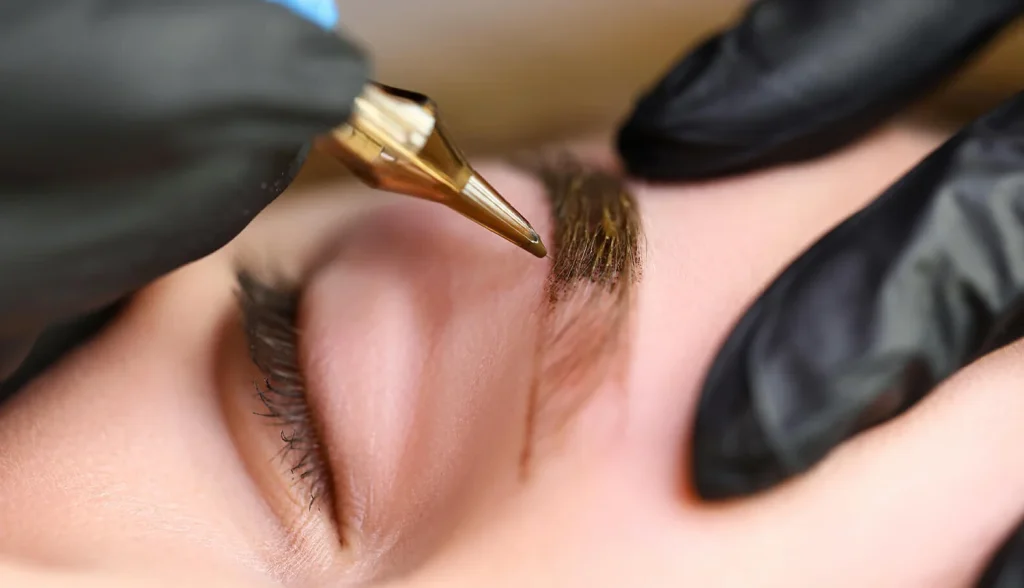Permanent Makeup Guide: Your Shortcut to Effortless Beauty
Permanent makeup has become one of the most in-demand aesthetic trends of recent years—and it’s not hard to see why. Whether you’re tired of spending hours in front of the mirror or just want to highlight your natural beauty in a subtle, lasting way, permanent makeup offers an elegant and low-maintenance solution.
In this guide, we’ll cover everything you need to know:
- What is permanent makeup, really?
- What techniques are available?
- Who is it ideal for?
- What’s the healing process like?
- And most importantly—how do you choose the right specialist?
Let’s dive into the world of flawless brows, defined eyes, and naturally tinted lips—all with long-term results.
What Is Permanent Makeup?

Imagine looking effortlessly fresh—not just in front of the mirror, but during a meeting, on a walk, in a quick selfie, or in a photo with loved ones. If you think beauty only comes from makeup, think again. For a look that’s truly natural and sustainable, we need to go beyond traditional cosmetics.
That’s where permanent makeup comes in.
Also known as micropigmentation, this method involves carefully implanting pigments into the upper layers of the skin. The result? Long-lasting, natural-looking definition. With treatments like microblading, permanent eyeliner, dipliner, and lip blush, you can enjoy a fresh, ready-to-go look at any time of the day.
Why Is Everyone Choosing “Permanent”?

The beauty industry has undergone a major transformation—driven by changing expectations, advanced formulations, and the global rise of longevity-focused aesthetics (treatments that aim to slow down aging and support long-term skin health). Permanent makeup is part of this movement.
It’s no longer just about enhancing your look—it’s also about:
- Supporting your skin’s natural functions
- Boosting its renewal capacity
- Strengthening its protective barrier
- Reducing the impact of stress
- Slowing down cellular aging
At Canan Genç Studio, we focus on techniques and products that truly respect your skin. Our goal is not only to give you visible results, but also to ensure they’re safe, durable, and in harmony with your natural features.
The Most Popular Permanent Makeup Treatments
Let’s break down the most frequently requested permanent makeup services and what makes each one special.
Microblading (Hair-Stroke Brow Design)

Natural, full, and expressive brows—without daily effort.
Microblading is a semi-permanent technique that mimics natural brow hairs using ultra-fine strokes. Pigment is implanted under the skin using a manual pen with microneedles to create the illusion of fuller, more symmetrical eyebrows.
Ideal for sparse or asymmetrical brows, thin or overplucked brows, those wanting a defined shape without heavy makeup.
Results typically last 12–18 months, depending on skin type and lifestyle. A touch-up is recommended 4–8 weeks after the first session for optimal longevity.
Permanent Eyeliner / Dipliner

Defined, captivating eyes—no smudging, no hassle.
This treatment adds permanent definition to the lash line using a pigment application tailored to your eye shape and style preference. You can choose between a subtle dipliner effect (along the lashes) or a more defined classic eyeliner style.
Benefits include:
- Time-saving for your daily routine
- Smudge-proof and waterproof wear
- Enhanced eye shape and color
- The effect lasts 2–3 years and can be refreshed when needed.
Permanent Lip Tinting (Lip Blush)

Even, vibrant, and naturally tinted lips—without lipstick.
Lip blush enhances the natural color, shape, and symmetry of your lips.
It can correct color imbalances, define contours, and bring life to dull or pale lips—all while maintaining a natural appearance. Perfect for those who want:
- A soft, youthful flush of color
- Improved lip definition
- A fuller look without filler
- Color typically fades gradually over 1–3 years, and touch-ups help maintain a fresh effect.
Is Permanent Makeup Safe? What Should You Expect?

When performed by a trained specialist under hygienic conditions, permanent makeup is a safe and skin-friendly procedure.
At Canan Genç Studio, we take every measure to ensure your safety and comfort, following strict hygiene protocols and using only EU-approved pigments. Still, every procedure comes with responsibilities—both for the practitioner and the client. Let’s go over a few key points.
What to Expect During the Procedure
- Consultation & Planning: Your face shape, skin tone, and preferences are evaluated in detail. We customize the pigment color and design to suit your features and style.
- Preparation & Numbing: The area is cleaned and a numbing cream is applied for comfort.
- Application: The pigment is applied using sterile, disposable tools in a calm, clean environment.
- Aftercare Instructions: Once the procedure is complete, you’ll receive a detailed aftercare guide to ensure optimal healing and results.
Important Considerations
- A slight tingling, redness, or sensitivity is normal immediately after the procedure.
- In the following days, minor peeling or scabbing may occur—this is part of the healing process.
- Avoid heavy sweating, sun exposure, and applying makeup to the treated area until fully healed (usually 7–10 days).
- Your specialist will guide you through the full recovery process and be available to answer any questions along the way.
Who Is a Good Candidate for Permanent Makeup?

Permanent makeup is suitable for a wide range of people—but it’s especially ideal for those who want to save time on daily makeup routines, desire natural-looking enhancement rather than dramatic changes, have sparse brows, pale lips, or faint lash lines, struggle with makeup allergies or sensitivities, live active lifestyles and need long-lasting wear, prefer a low-maintenance beauty routine.
It can also be a great confidence boost for post-chemotherapy patients, individuals with alopecia, people with visual impairments or limited mobility who find applying makeup difficult.
Who Should Avoid Permanent Makeup?
In certain cases, it’s best to postpone or avoid treatment. These include:
- Pregnant or breastfeeding individuals
- Those with active skin infections, eczema, or severe acne in the treatment area
- People using blood thinners or immunosuppressive medication
- Clients with keloid scarring tendencies
- Those currently undergoing chemotherapy or radiation
If you’re unsure whether you’re a suitable candidate, a consultation with a licensed practitioner is essential. Your safety always comes first.
Good Results Are Never a Coincidence.
At Canan Genç Studio, I offer an approach that values not just aesthetic satisfaction but also your emotional comfort. I believe permanent makeup is not only about looking good—but about feeling good in your own skin.
Curious About Permanent Makeup?

Let’s determine the right treatment for your skin type and plan the best solution tailored to your needs.
Book your free consultation today and let your beauty shine—professionally and permanently.
Frequently Asked Questions
Does permanent makeup hurt?
Thanks to the anesthetic creams applied during the procedure, most people feel little to no pain.
For treatments like microblading or permanent eyeliner, a local numbing agent is used to ensure comfort.
What skin types is permanent makeup suitable for?
Permanent makeup tends to last longer on dry or normal skin.
For oily skin, techniques like microblading may fade more quickly—so we often recommend ombre brows or powder brows as alternatives.
How is skin tone matched in permanent makeup?
Pigment selection is based on your skin tone, undertone, and natural color palette.
For lip blush, we usually start with a shade 1–2 tones darker, since the pigment lightens over time.
In brow and eyeliner applications, it’s essential to anticipate how the pigment will settle into the skin.
That’s where experience truly matters.
When can medical conditions become a concern?
If you are taking blood thinners or have active acne, eczema, or skin infections, the procedure should be postponed.
During pregnancy or breastfeeding, hormonal changes can affect pigment retention—so we don’t recommend treatment.
For those with chronic conditions, doctor approval is essential.
How long does microblading last?
Typically 1 to 2 years, depending on skin type, lifestyle, and sun exposure.
Oily skin may experience a shorter retention time.
Powder brows or microblading—which is better?
Powder brows give a soft, filled-in makeup look—ideal for those who prefer more definition.
Microblading (hair-stroke technique) is better suited for sparse, natural brows.
For oily skin, powder brows tend to last longer.
We determine the most suitable method together—some clients even choose a hybrid technique that combines both.
How long do hair-stroke brows last?
Microblading typically lasts 12–18 months.
A touch-up within the first month helps extend the results.
Excessive sun exposure, chemical peels, or exfoliating skincare can cause the pigment to fade more quickly.
What does permanent makeup include?
It’s not just about brows.
Permanent makeup includes microblading, powder brows, eyeliner, dipliner, lip blush, lash line enhancement, and in some clinics even areola pigmentation and scar camouflage.
Which skin layer is targeted in permanent makeup?
Permanent makeup is applied to the upper dermal layer, between the epidermis and dermis.
This makes it more superficial than a tattoo—meaning it fades naturally over time, making it both subtle and adaptable.
Who should avoid permanent makeup?
We do not recommend treatment for:
•Pregnant or breastfeeding individuals
•Those with skin infections or weakened immune systems
•Clients with a history of keloid scarring
People with diabetes or other chronic illnesses should obtain medical approval, and those with known allergies should undergo a patch test before treatment.
After permanent eyeliner, how many days should I avoid water?
For the first 3 days, it’s crucial to keep the eye area dry.
Avoid eye makeup and activities like swimming or using a steam room for at least a week.
Post-treatment care is essential for long-lasting results.
How long does lip blush last?
Results typically last 2 to 3 years, depending on the individual.
The color appears more intense at first, but softens during the healing process.
Proper aftercare—like using moisturizers and SPF—directly affects the longevity of the results.
